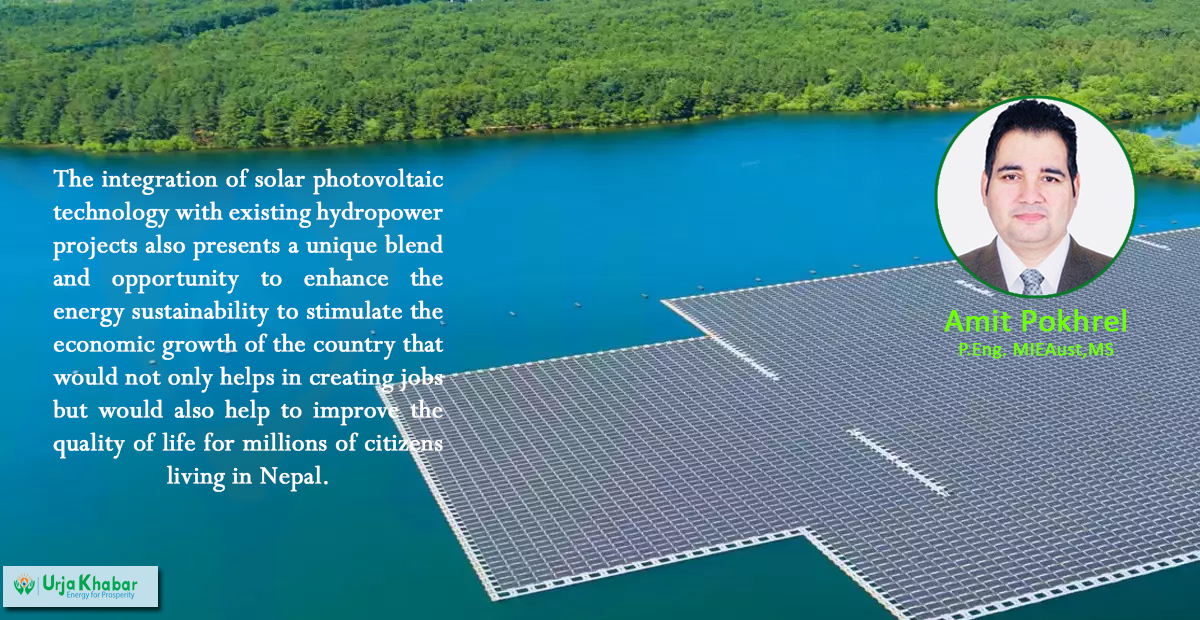Energy Update
The Importance of implementing Real-Time Based Power Exchange in Nepal

Kathmandu; Electrical Energy is the most superior form of energy for trading as a commodity like other tradable business products. For the generation, transmission, and distribution of electricity in bulk quantity needs captive investment. Nepal Electricity Authority is the public government-owned power entity solely accountable for power supply management everywhere Nepal. According to the annual report, NEA has earned 11.056 billion profits and has 77.8 billion net revenue collection within the year 2019/2020. Together with NEA, other privately owned 98 IPPs companies are collecting huge profits from energy transactions. “To increase competitiveness to the next generation solutions for sustainable and reliable energy trading new automated power exchange authority is required for the global reach.”
Energy utilities are the capital intensive intuitions followed by extensive transactions during the trading process. Buying and selling energy has been adopted manually by the Nepal Electricity authority as a single entity to its related stakeholders in Nepal. Load shedding is officially ended and currently, the system has been supplying 1332 MW to the integrated national grid. The Nepali power grid will transmit and distribute about 5000 MW within an estimated three/four years.

The government of Nepal master plan primarily focused on an enormous domestic generation of 38 GW in 2040 based on 7.2 % GDP growth together with the advent of constructing a high voltage transmission line facilitating power export to neighboring countries. The government of Nepal has been expanding transmission and distribution lines rigorously in both interconnected and isolated systems. Improved transmission and generation system, increased domestic generation, reducing technical losses, reinforcement of automation and IT enhancement are the key factors of massively improving Nepal power system security.
The new transmissions plan and corporate development plan are the important milestones for the world entry of power utilities. Which revels the more robust and reliable power system network for the worldwide power markets. It’ll be implementing N-1 contingencies that facilities the international trade of this vigorous commodity.

In this regard, we must always adopt a real-time based power exchange mechanism for future operation. It’s a completely automated, highly secured, speedy, and efficient online trading platform to extend the accessibility and transparency of the energy market. It opens the global reach and easy access to the information and offers reliable solutions to transform the power market ensuring global competitions.
The present practice is to allot an IPO of shares and debentures and traded within the secondary market as a commodity through Nepal stock exchange Ltd. Power exchange isn’t limited in issuing shares and debentures. It expands to the contract delivery of power for the succeeding day through a competitive bidding process, where related stakeholders will have participated. Multiple buyers and sellers are involved in the trading process through securities brokers. Market clearing process, prices, and volumes are determined by the regulating body supported the social welfare maximization principles and global market structures.
It’s believed that the process of such physical delivery of electricity increases transparency and efficient market competition from which related stakeholders can be benefited. Electricity traders, public and private generating stations, retailers, distributors, open access captive customers are often involved within the power trading process. For fully automated electronic-based Domestic as well as cross border power trading include Day-Ahead Market (DAM), Term Ahead Market (TAM), Any Day Market (ADM), Intra Day Market (IDM), the long term short term, and medium-term power contract.”
The global market is already showing technological advancement to the real-time power trade to date. Association of exchange power (APEX) is that the American online trading body established for the operation of world competitive electricity markets in 1999 A.D. Similarly, the European power exchange (epexspot) is founded for electric power exchange in 2008 A.D. Japan established the JEPX in 2003 A.D. for the identical purpose.
Furthermore, our neighboring country India has already established two company namely Power Exchange India Limited (PXIL) and Indian Energy Exchange (IEX) in 2008 A.D. providing a countrywide, automated electronic trading platform for the physical delivery of electricity. Both of the trading bodies are approved and controlled by the Central Electricity Regulatory Commission. This is often the X-factor for cross border power exchange to Nepal. Going back to 1971 A.D. Nepal and India are signed for power exchange on importing and exporting electricity based on need. National Thermal Power Corporation Limited (NTPC) together with Vidyut Vyapar Nigam (VVN) and Nepal Electricity Authority (NEA) has been exchanging electrical power on a government-to-government (G2G) agreement basis up to now.
Recently, the government of Nepal has decided to prior approval to NEA for all sorts of cross border power exchange day ahead market, term ahead a market day, and long term short term, according to the managing director Kulman Ghising. “Like trade in goods, electricity trade has also been approved in real-time,” said Hon’ble Minister Barsa Man Pun. Also, Independent Power Producer has established a public company Nepal Power Exchange Limited (NPEL) to ensure the marketplace for electricity generated by private power utilities.
The application has been submitted at the Electricity Regulation Commission and Government of Nepal. But, the application has not been approved yet. If not permitted in time the generated power will be wasted and IPPs may fall to a huge loss, said IPP chairperson.
The world is going to adopt an open liberal market policy but our practice is not seen till now in Nepal. Some agreements are accomplished but the implementation in real scenarios seems difficult. But, the government officials of India and Nepal have signed an agreement on Nepal’s entry into the power exchange trade market of India, in January 2019.
Later on, the government of Nepal established Nepal Power Trading Limited (NPTL), which could be a huge milestone within the history of Nepal for power trading within the country and outside the country. Nepal is going to be a decent player in India’s global power market trading through NPTL. This is often an astonishing triumph for Nepal for the presence in the global open market so it can easily sell surplus and buy the required amount of electricity to India and Bangladesh competitively.
By making proper guidelines, policies, regulations, and infrastructures, it’s a good time to initiate a real-time based global open power market. The active and upgraded stock exchange promotes the economic growth where the investors, security holders, buyers, sellers are benefited from financial gain and fast delivery of reliable electricity. Thus power stock market could be a mechanism to facilitate the exchange of physical delivery of electricity by bringing potential buyers and sellers on a competition basis. It is the next-generation solution for sustainable energy trade to ensure transparency and to realize the accessibility of domestic resources properly.
Source: NEA annual report (2019/2020)
Acharya, Is a Junior Professor at Nepal Engineering College, Changunarayan Bhaktapur
Conversation
- Info. Dept. Reg. No. : 254/073/74
- Telephone : +977-1-5321303
- Email : [email protected]













.jpg)
